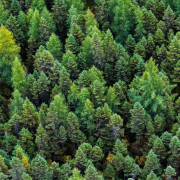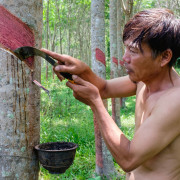- Science News
- Climate action
- Global significance of boreal forest and Indigenous-led conservation within it
Global significance of boreal forest and Indigenous-led conservation within it
By Jeff Wells, Natalie Dawson, Nada Culver, Frederic Reid and Shaunna Morgan Siegers
A new paper in Frontiers in Forests and Global Change -- The State of Conservation in North America’s Boreal Forest: Issues and Opportunities -- showcases the global significance of one of the world’s largest remaining intact forest landscapes, the Boreal Forest biome of Canada and Alaska. Stretching from interior Alaska across Canada to the Atlantic shores of Newfoundland and Labrador, the Boreal Forest biome encompasses a massive six million km2 (1.5 billion acres) of woodlands, wetlands, lakes and rivers. The authors point out that the biome is still one of the world’s biomes least impacted by large-scale industrial development but that it is still inadequately protected, at 8-13% far below global Convention on Biological Diversity protected areas benchmarks.
“The Boreal Forest of Canada and Alaska is one of very few remaining places left on earth where it could still be possible to achieve the levels of conservation protection that science now shows is necessary,” said Dr Jeff Wells, lead author on the paper and the vice-president of Boreal Conservation for the National Audubon Society. “With biodiversity and ecological functions in significant decline in much of the world, protecting still intact landscapes should be of the highest international priority.”
The State of Conservation in North America’s Boreal Forest: Issues and Opportunities► Read original article► Download original article (pdf)
The paper also describes the threats to the ecological integrity of the Boreal Forest biome including from loss and degradation of habitat from industrial forestry, mining, oil and gas projects, large hydropower, building of new roads and other infrastructure, and from climate change. For example, the authors report that over a million km2 of the Boreal Forest biome has been logged at least once and over 60% has been committed to logging through long term leases. The increasing frequency of forest fires as a result of climate change has resulted in an estimated 399,000 km2 of the Boreal Forest having burned between 1985 and 2010. And the industrial footprint from the oil and gas industry in Canada’s portion of the Boreal Forest biome as of 2003 was estimated at 460,000 km2 or approximately 8% of Canada’s portion of the biome.
Despite these threats, the paper points out that Indigenous governments from across Canada are leading impressive land-protection initiatives to establish Indigenous Protected and Conserved Areas that are and will be some of the largest new protected areas on the planet. “Indigenous governments within the Boreal Forest biome are at the leading edge of the most ambitious protected areas proposals in the world,” said Nada Culver, one of the co-authors on the paper and vice-president of Public Lands for the National Audubon Society. “These Indigenous governments deserve the full support of federal, state, provincial and territorial governments across Alaska and Canada.”
Recommendations in the paper highlight the need to support and encourage, including through higher levels of federal government funding, the land-use planning and protected areas work being carried out by Indigenous governments as well as Indigenous Guardians programs modeled after the successful Indigenous Rangers program in Australia. In the Boreal Forest region of Alaska, there is a major need for enabling and respecting the rights of Indigenous Peoples to decide on future management plans for lands within their traditional territories.
Image: Shutterstock
Original article: The State of Conservation in North America’s Boreal Forest: Issues and Opportunities
REPUBLISHING GUIDELINES: Open access and sharing research is part of Frontiers’ mission. Unless otherwise noted, you can republish articles posted in the Frontiers news blog — as long as you include a link back to the original research. Selling the articles is not allowed.







